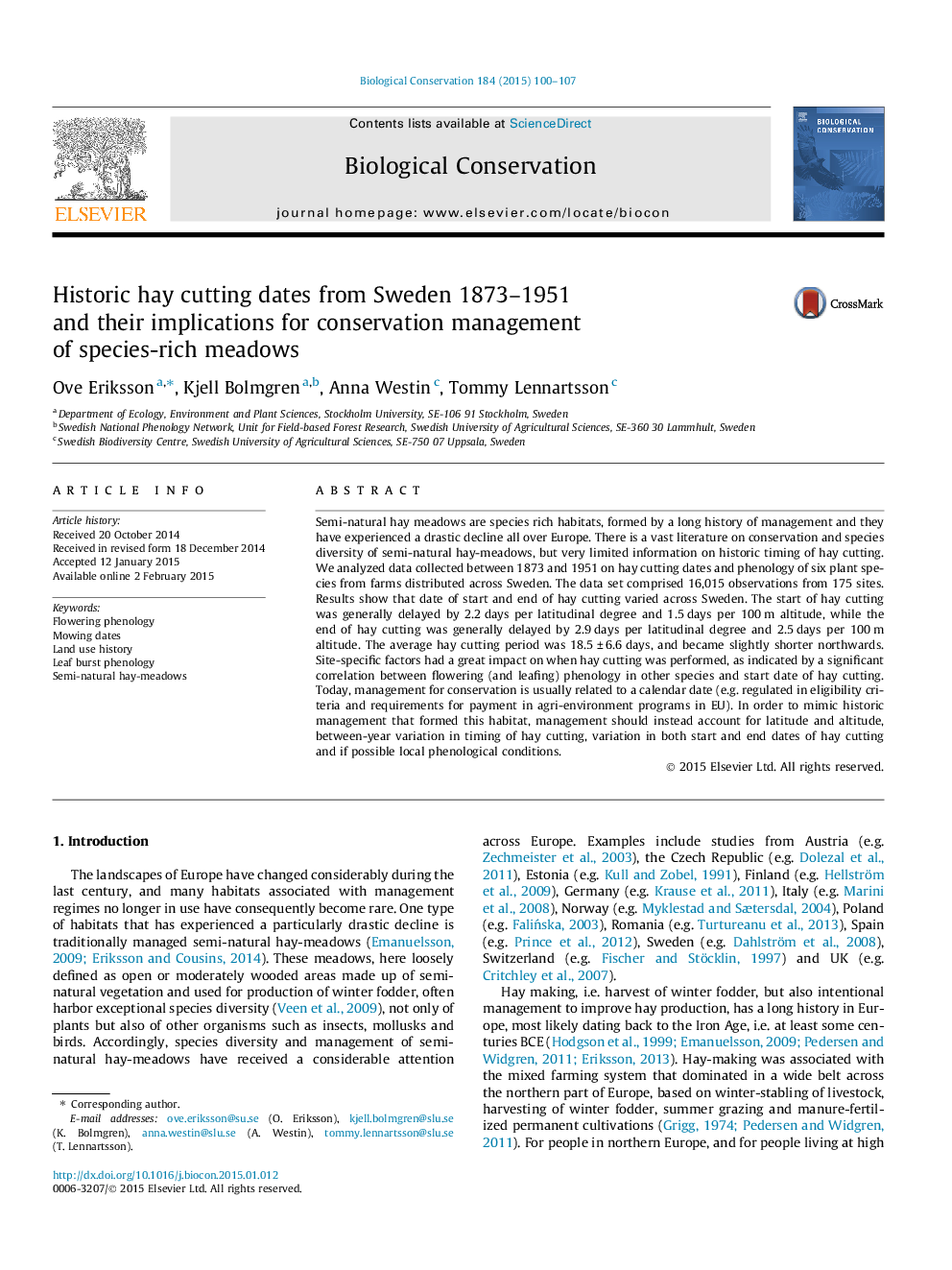| کد مقاله | کد نشریه | سال انتشار | مقاله انگلیسی | نسخه تمام متن |
|---|---|---|---|---|
| 6300023 | 1617917 | 2015 | 8 صفحه PDF | دانلود رایگان |

- We analyze a unique historic dataset from Sweden on timing of hay cutting.
- The timing of hay cutting is an essential component of meadow conservation.
- Hay cutting dates varied between years, and with latitude, altitude and local conditions.
- In particular the variation in finish date of hay cutting is important for species-richness.
- This variation should be incorporated in current conservation programs.
Semi-natural hay meadows are species rich habitats, formed by a long history of management and they have experienced a drastic decline all over Europe. There is a vast literature on conservation and species diversity of semi-natural hay-meadows, but very limited information on historic timing of hay cutting. We analyzed data collected between 1873 and 1951 on hay cutting dates and phenology of six plant species from farms distributed across Sweden. The data set comprised 16,015 observations from 175 sites. Results show that date of start and end of hay cutting varied across Sweden. The start of hay cutting was generally delayed by 2.2 days per latitudinal degree and 1.5 days per 100 m altitude, while the end of hay cutting was generally delayed by 2.9 days per latitudinal degree and 2.5 days per 100 m altitude. The average hay cutting period was 18.5 ± 6.6 days, and became slightly shorter northwards. Site-specific factors had a great impact on when hay cutting was performed, as indicated by a significant correlation between flowering (and leafing) phenology in other species and start date of hay cutting. Today, management for conservation is usually related to a calendar date (e.g. regulated in eligibility criteria and requirements for payment in agri-environment programs in EU). In order to mimic historic management that formed this habitat, management should instead account for latitude and altitude, between-year variation in timing of hay cutting, variation in both start and end dates of hay cutting and if possible local phenological conditions.
Journal: Biological Conservation - Volume 184, April 2015, Pages 100-107